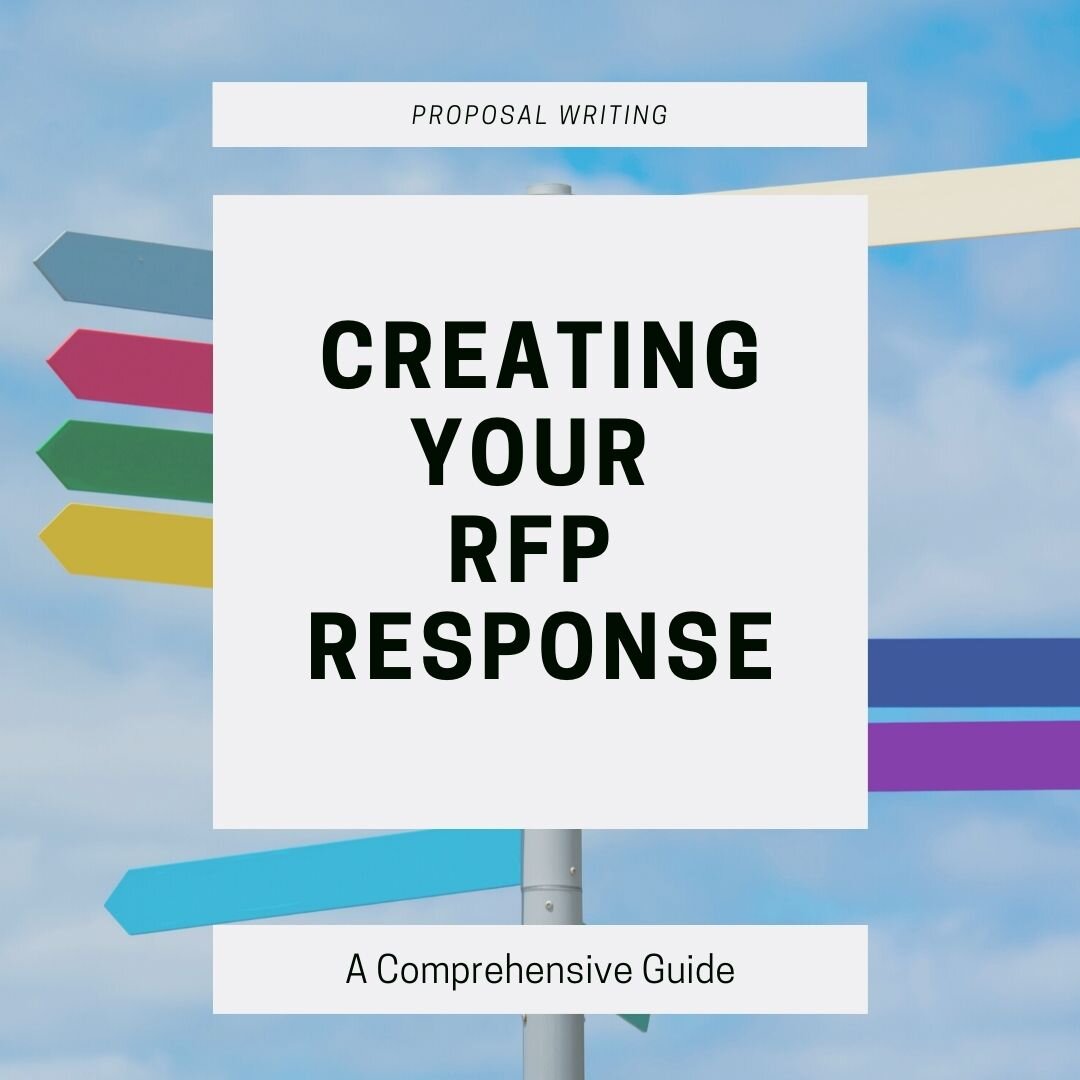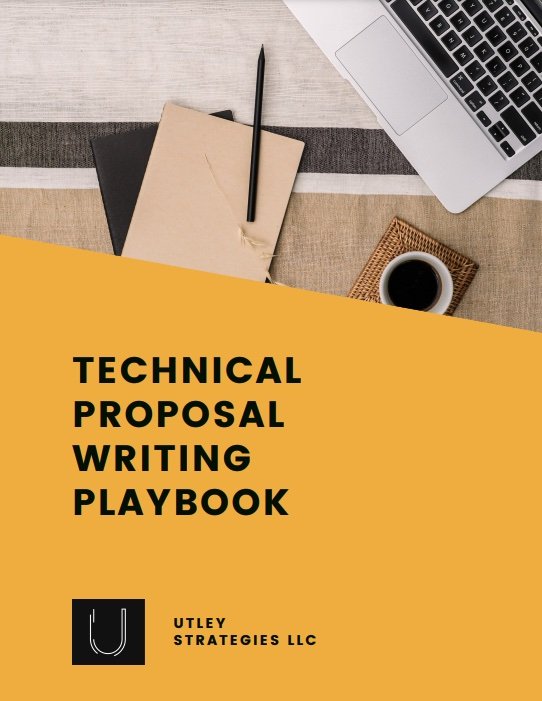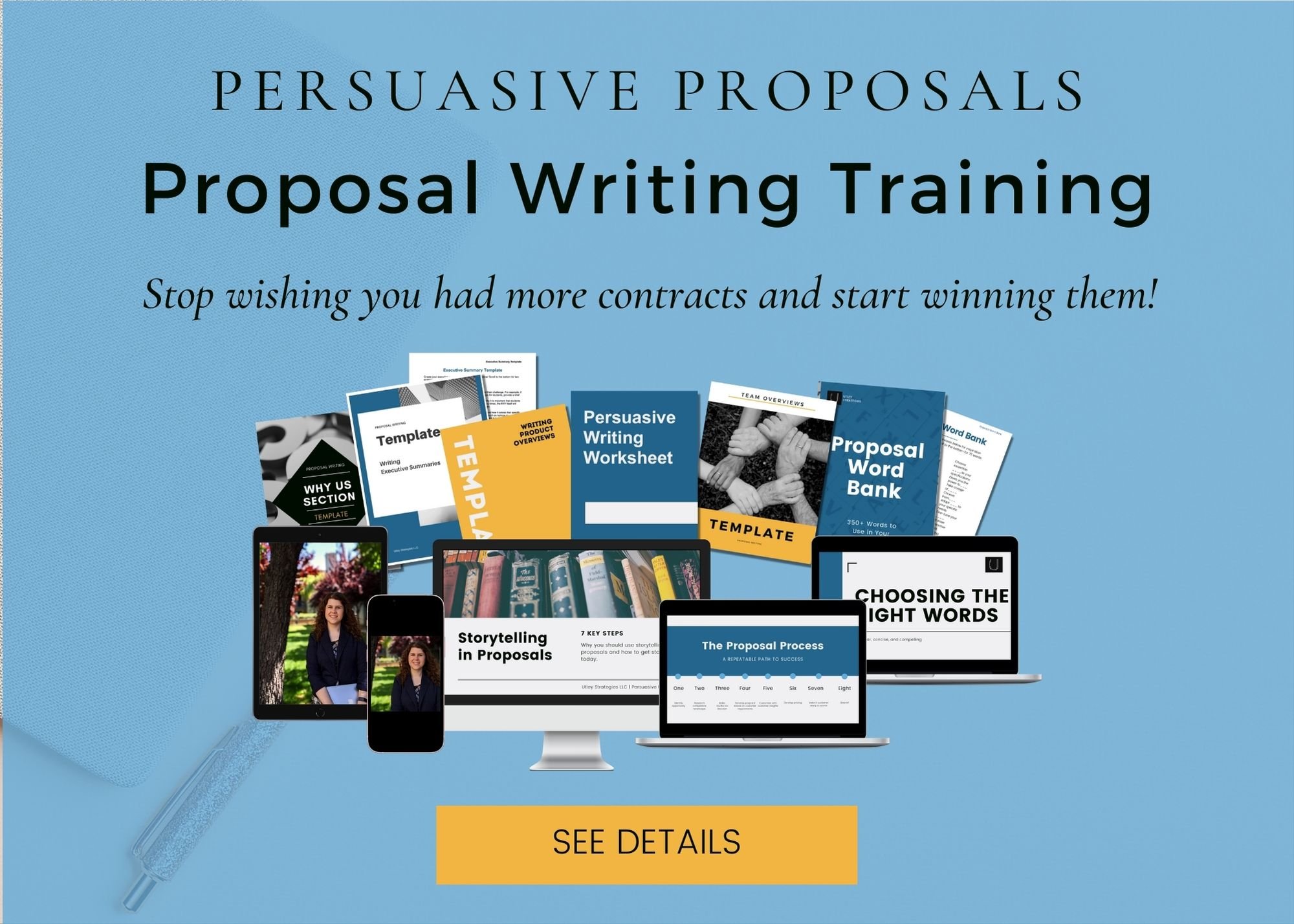The Winning RFP Response: Process, Strategy, and Tools
Getting Started
Whether you’ve been invited to respond to an RFP or you found the posting online, coming across an RFP for a project that aligns with your business goals is an enticing prospect. RFPs are typically for large projects, and those large projects mean more revenue and often a better bottom line. While the opportunity might be tempting, there’s often just one thing standing in the way: how do you actually create a winning RFP response?
In this blog post, we’ll go over the RFP process and everything you need to know to create your best proposal.
Table of Contents:
What is a Request for Proposal (RFP)?
First things first: what is an RFP? RFP stands for Request for Proposal, and it is the formal process where a buyer solicits proposals from potential vendors to provide a product or service. RFPs in the public sector, such as government agencies and public school districts, are posted publicly and anyone can respond. RFPs for private organizations (as in, no government funding) are only sent out to organizations who they want to submit proposals.
Public sector RFPs tend to be longer and more complicated than those coming from private organizations. They also often have stricter compliance requirements and less flexibility if you don’t strictly adhere to their requirements. Fortunately, most RFPs clearly detail what is required.
RFP Response Process Overview
The RFP response process will closely align with the procurement process. Let’s take a look at this in more detail.
Request for Information (RFI)
Many organizations will release a Request for Information (RFI) before the RFP is released. During this stage, the buyer is trying to learn more about potential solutions that currently exist in the market and, in some cases, develop a better idea for what they should budget. The RFI is a great place to persuade the buyer that a solution like yours is the best option to ensure the RFP is aligned with what you do.
While most RFIs don’t require a response, there are a few that are mandatory if you want to proceed to the RFP stage. Before you decide to not submit a proposal, confirm if this is the case.
***Note: In the construction industry, RFIs may instead be called Request for Qualifications (RFQ). This is similar to an RFI, but they normally have a more defined project and solution in mind already, and the RFQ is released to narrow down the pool of vendors who are asked to respond to the RFP. Typically responding to the RFQ is mandatory to respond to the RFP, so pay attention if you see a Request for Qualifications come your way.
Request for Proposal (RFP)
After the RFI, the buyer will finalize what they need for the project and release the formal RFP. The RFP is where you will be asked to submit detailed information on how you will fulfill the request. If it’s for products, you will describe your products and provide specifications. Services projects will often ask you to respond to a Scope of Work and share information on your team. As stated above, most RFPs tell you exactly what you need to provide, which makes the process easier. Provide answers to questions, pricing, and completed forms as part of your RFP response.
Always read the RFP front-to-back to ensure you don’t miss anything.
Pre-Proposal Conference
Many organizations will have a conference shortly after the RFP is released to address any questions and allow you to hear directly from the customer why they are searching for a vendor. Some of these conferences are mandatory, and even if one isn’t, it’s still a good idea to attend to see who else might be bidding and ensure the opportunity is a good fit for your organization. Many times you can ask questions during this conference, so prepare a list in advance if desired.
Q&A Period
RFPs will also have a formal question period where bidders are invited to submit questions related to the technical, administrative, and legal requirements laid out in the RFP. Many RFPs have a specific format that you must follow when submitting questions. Always meet the deadline to ensure your questions are answered.
Most organizations will share a list of all questions that were asked and the answers with all bidders. For some private sector RFPs, they will instead respond to you directly and not share the questions. This normally is outlined in the RFP.
Proposal Development
Proposal development should begin as soon as you receive the RFP and decide to pursue the opportunity. The proposal development process varies at each organization, but all will include some elements of writing content, review, production, and strategy development.
Download the *FREE* Technical Proposal Writing Playbook to improve your proposals today!
RFP Deadline
The RFP deadline is the final date and time by which proposals must be received. Plan your production schedule to allow time to meet the deadline if there is a technical issue or an delay in shipping (for hardcopies).
Presentations
If your proposal is a success, you will likely be invited to present your proposed solution to a team of evaluators. If you have already developed themes you want to highlight in your proposal, you can use those again here in your presentation. Sometimes you will be given a set of questions or an outline to follow for your presentation. Use those to comply, and incorporate your unique positions throughout your presentation.
The presentation is typically the final round for winning the contract, and the list of possible vendors has already been narrowed down. If you made it to this round, give it your best shot to win. Practice the presentation at least 7 times before you present and practice responding to any follow up questions you think they might ask to really knock it out of the park.
Best and Final Offer
Sometimes organizations will request a Best and Final Offer before or after the presentation (or not at all). When a BAFO is requested, it most often is a request for a lower price. Sometimes organizations will also try to negotiate on another element of your proposal, but most often, the goal of this round is to have vendors lower the price. Where possible, research ahead of time to try to learn if the organization you’re responding to follows this process, and account for this in your first round of pricing.
Contract Negotiations
After presentations and any applicable BAFOs, you will enter into negotiations with the buyer. For some organizations, this is a very short process and simply a matter of signing the contract. In other cases, there will be extensive negotiations by both legal teams. This varies based on the scope of the project, the requirements within the contract, and how much your company is willing to agree to.
Once negotiations are completed, the contract is signed and the work begins.
RFP Debrief
After the contract is awarded, whether you won or lost, it’s best to debrief on the RFP process. Create a list of questions to discuss with your proposal team, and determine what went well, what didn’t go well, and how you can do better next time. If there were issues with the process or you scrambled to find content for a specific section, you can note it in the debrief and take action to improve it next time. This is also a great opportunity to FOIA proposals if it was a government agency to learn how competitors responded and how you can better position your offering.
Where to Find RFPs
If you’re ready to start responding to RFPs, you’re probably wondering how to find them. There are several bid aggregator sites that compile mostly public RFPs, such as for government agencies or nonprofit organizations. Periscope or Bidnet are comprehensive options for any public sector RFP, and you can also review the federal site for federal RFPs specifically.
If you’re looking for contracts in a specific region with a specific governmental entity, you can quickly find their procurement information by searching the entity name and “procurement”. For example, if you’re hoping to work with Colorado state parks, you would search “Colorado State Parks Procurement” and find the state’s purchasing department. From there, you can learn if they have their own procurement portal where they release RFPs, which you can monitor.
Finding RFPs for private entities is a little harder. For this, you’ll need to focus on your marketing and business development efforts. Private companies (i.e. anything that’s not a government organization) don’t have to competitively bid their contracts in the same way as the government, and they can invite a small group of potential vendors to submit proposals. This means you’ll need to use your marketing efforts and sales team to work with the potential client in order to make sure you are one of the companies on their list.
How to Read RFPs
When you finally receive the RFP, you’ll need to read the entire document (yes, even if it’s hundreds of pages) to make sure you can agree to every detail in the contract or propose an alternative. Before you spend hours reading the entire RFP, however, you can skim it to learn if it’s worth responding to. Here are the key topics to watch for when reading an RFP.
Submission Deadline
The deadline to submit your proposal will impact your ability to respond. If you don’t find the RFP until 2 days before it’s due, you most likely aren’t going to win. Most RFPs don’t allow late submissions, so make sure you note the exact time it’s due and submit your response with plenty of time.
Q&A Deadline
Almost every RFP has a period where respondents are allowed to ask questions. Use this time to formulate any questions you have about the scope of the work required, the proposal itself, or the customer’s needs. Many RFPs are equally as strict about the Q&A period as they are about the proposal deadline itself, so make sure you submit all questions by the deadline using the method they outline.
Submission Requirements
Every organization has a different method for receiving the proposals. Some accept a simple email submission, others have a specific portal, and there are many organizations who still require physical hard copies. When reviewing the RFP, search for the submission information to discover how you’ll need to prepare your proposal.
If you have to mail physical copies, it’s best practice to ship at least two business days before the deadline if you’re shipping via priority overnight. Wait any longer, and you risk your package not arriving.
For online submissions, review the portal before the day you plan to submit so you know how to navigate around and can address any technical issues, such as your login information not working. It’s also best to try to submit proposals 24 hours before the deadline if it’s through a portal. You don’t want to wait until minutes before the deadline only to discover that your file size is too big or you misread the timezone.
Scope of Work
This is where you’ll spend most of your time reading. This section of the RFP outlines the products or services that they are hoping to acquire. Here you’ll learn if you’re qualified to support the contract and details on specifically what you’ll be doing.
Format Requirements
In addition to the submission requirements, many RFPs outline a specific format that they want proposals to follow. If that’s the case, you’ll need to scrap your standard proposal template and instead follow the outline that they provide. This will often include specific questions that you need to answer and any forms or other documents that you need to provide. This section may also note if there is a specific page limit that you should follow.
Contract
The contract details the legal requirements of the contract. You’ll need your attorney to review it to confirm that you agree to all of the terms. Some organizations allow you to propose alternate language or a contract of your own. Each RFP is different, which means you’ll need to read closely to learn what they accept.
Developing a Winning Strategy
Many companies make the mistake of simply answering the questions and sending out the proposal. RFPs are designed to be competitive, and that means you need a competitive win strategy to ensure you earn points and land the contract. The foundation of a solid win strategy include an understanding of the buyer, insight into your competitors, and highlights of your unique differentiators. If you piece all of these together within your RFP response, your proposal will already be steps ahead of many other companies.
Creating Your Proposal
Most RFPs will have specific instructions on the format they want to see in your proposal. Always follow the RFP requirements exactly or you risk being deemed non-compliant (which means they won’t review your proposal at all). These are a few basic pieces that are the part of nearly every proposal process.
Kickoff meetings
The kickoff meeting is an essential step in the proposal process. This meeting allows you to bring together all members of the proposal team (see below) to develop a proposal strategy, agree to a schedule, and assign sections of content. After the kickoff meeting, everyone should know what action to take to make the proposal a success.
Core Content Creation
Developing the core proposal content is the largest part of the process. This might involve collecting notes from a Subject Matter Expert, gathering financial data, or revising your company overview. The core proposal content includes responding directly to any questions or requirements in the RFP. Typically this takes several weeks and will require multiple status calls by the project/proposal manager to keep everyone on track.
References & Case studies
Any required references or case studies will be listed in the RFP, but this section is often tricky for organizations to pull together since it involves contacting existing clients. When you see this requirement in an RFP, contact potential references early to avoid last minute scrambling.
Pricing
Pricing is always a key part of the RFP process. Your team should develop a strategic approach to your pricing based on what you know about the customer and potential competitors.
Cover letter & Executive Summary
Some RFPs require these sections, and others don’t. Unless you have a strict page limit, including a cover letter is a nice way to add a personal touch and a human element to your proposal. Writing the cover letter and executive summary last will reduce the amount of revisions and ensure you create documents that accurately reflect your solution and competitive advantage.
Production & Submission
Once everything is finalized, it’s time to produce your proposal. For electronic submissions, this means saving the final version as a PDF (or in the format requested by the buyer) and submitting via email or a portal. Some organizations require hard copy submissions, which means production includes physically printing and mailing your proposal. If only a hard copy is requested, it is still best practice to send a flash drive with an electronic version as well.
Creating an RFP Response Template
Watch now to learn best practices for creating an RFP response template.
Proposal Team
First and foremost, to create a compelling proposal, you need a strong team. Winning an RFP is a group effort, and it’s helpful to have your team figured out before the RFP is released. On your team, you will need:
Proposal Writers. RFPs require a lot of content, and that means you need someone to write that content. This may be a group of writers, a sales person, a marketer, or the CEO, but whoever is writing the proposal should know as much about the RFP and the customer as possible to create great content.
Proposal Manager. A proposal manager is the project manager who develops the schedule and ensures all requirements are met. This role may be shared with the proposal writer (i.e. the same person writing and managing), but there should be only one main person managing the proposal to avoid confusion.
Sales Teams. The sales team typically knows the most about the customer and why they went to RFP. They should be involved in the RFP response process to share insight into customer pain points, challenges, and goals that can be addressed within the proposal content.
Subject Matter Experts. Subject Matter Experts (SMEs) are essential to creating proposal content that showcases your solution. SMEs will craft content for the section related to their area. For example, an engineer will write technical content while a project manager will share content on the project management process used to ensure project success.
Proposal Technologies
In addition to the people creating your proposal, you need technologies to finalize, format, and create your proposal. A few popular proposal technologies include:
Microsoft Word. Most organizations use Microsoft Word for writing and formatting their proposal.
Adobe InDesign. Organizations who have a designer on staff (or who specialize in design) will use Adobe InDesign to design the final proposal.
RFP Software. If you respond to RFPs regularly, there are several RFP softwares available to make the process easier. Examples include RFP360 and RFPIO.
Adobe Acrobat Pro. If you’re responding in the government sector, you will likely be asked to complete forms to include with your RFP response. Adobe Acrobat Pro makes it easy to merge the completed forms with your proposal in a final, customer-ready PDF.
Next Steps for Responding to RFPs
Now that you know a bit more about RFP responses, it’s time to get started on your own! If you need more guidance, check out our blog for tips, check out our RFP Response Template bundle or reach out for help.





